 W
WThe 1668 Bawdy House Riots took place in 17th-century London over several days in March during Easter Week, 1668. They were sparked by Dissenters who resented the King's proclamation against conventicles while turning a blind eye to the equally illegal brothels. Thousands of young men besieged and demolished brothels throughout the East End, assaulting the prostitutes and looting the properties. As the historian Tim Harris describes it:"The riots broke out on Easter Monday, 23 March 1668, when a group attacked bawdy houses in Poplar. The next day crowds of about 500 pulled down similar establishments in Moorfields, East Smithfield, St Leonard's, Shoreditch, and also St Andrew's, Holborn, the main bawdy house districts of London. The final assaults came on Wednesday, mainly in the Moorfields area, one report claiming there were now 40,000 rioters - surely an exaggeration, but indicating that abnormally large numbers of people were involved. ... On all days the crowds were supposedly armed with 'iron bars, polaxes, long staves, and other weapons', presumably the sort of tools necessary for house demolition. The rioters organized themselves into regiments, headed by a captain, and marching behind colours."
 W
WLady Henrietta Berkeley was an English aristocrat notorious for having an affair with her elder sister's husband. It began in 1681 when Berkeley was not yet an adult and was discovered by her mother the following year. Berkeley was removed to the family seat at Epsom then escaped and went into hiding in lodging houses in London, under the protection of her lover. Her father, George Berkeley, 1st Earl of Berkeley, decided to prosecute her lover, Ford Grey, 1st Earl of Tankerville, in a trial which became a sensation in 1682.
 W
WBlackfriars Theatre was the name given to two separate theatres located in the former Blackfriars Dominican priory in the City of London during the Renaissance. The first theatre began as a venue for the Children of the Chapel Royal, child actors associated with the Queen's chapel choirs, and who from 1576 to 1584 staged plays in the vast hall of the former monastery. The second theatre dates from the purchase of the upper part of the priory and another building by James Burbage in 1596, which included the Parliament Chamber on the upper floor that was converted into the playhouse. The Children of the Chapel played in the theatre beginning in the autumn of 1600 until the King's Men took over in 1608. They successfully used it as their winter playhouse until all the theatres were closed in 1642 when the English Civil War began.
 W
WThe Cambridge History of British Theatre is a non-fiction work consisting of three volumes in book form. It was originally published in 2004 by Cambridge University Press. It was later published online in 2008, also by Cambridge University Press. It is not an encyclopedia. Essay articles are in rough chronological order and have been compiled in the three volumes by various editors.
 W
WJoan Carlile or Carlell or Carliell, was an English portrait painter. She was one of the first British women known to practise painting professionally. Before Carlile, known professional female painters working in Britain were born elsewhere in Europe, principally the Low Countries.
 W
WThe execution of Charles I by beheading occurred on Tuesday 30 January 1649 outside the Banqueting House in Whitehall. The execution was the culmination of political and military conflicts between the royalists and the parliamentarians in England during the English Civil War, leading to the capture and trial of Charles I. On Saturday 27 January 1649, the parliamentarian High Court of Justice had declared Charles guilty of attempting to "uphold in himself an unlimited and tyrannical power to rule according to his will, and to overthrow the rights and liberties of the people" and he was sentenced to death.
 W
WThe City of London Militia Act 1662 is an Act of the Parliament of England.
 W
WThe Clifton Star Chamber Case or Clifton vs. Robinson was a court case of early modern England, in 1601, before the Star Chamber, concerning the abduction of children by choir schools.
 W
WThe Cockpit was a theatre in London, operating from 1616 to around 1665. It was the first theatre to be located near Drury Lane. After damage in 1617, it was named The Phoenix.
 W
WThe Commissioners of Scotland Yard was the informal name for the Commissioners for the Streets and Wayes, a body of improvement commissioners established in 1662 to manage and regulate various areas relating to streets and traffic in the cities of London and Westminster and the borough of Southwark. They were appointed under a 1662 Act of the Parliament of England which expired in 1679. The Commissioners' office was attached to that of the Surveyor of the King's Works in Scotland Yard.
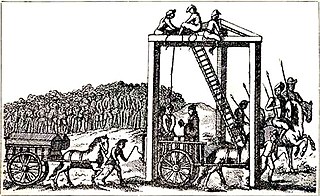 W
WThomas Cox, known as "The Handsome Highwayman", was an English highwayman, sentenced to death and hanged at Tyburn. He had a reputation for a spirited nature and it is reported that when asked if he wished to say a prayer before being hanged, he kicked the ordinary and the hangman out of the cart taking him there.
 W
WEssex's Rebellion was an unsuccessful rebellion led by Robert Devereux, 2nd Earl of Essex, in 1601 against Elizabeth I of England and the court faction led by Sir Robert Cecil to gain further influence at court.
 W
WThe Fatal Vespers was a disaster in Blackfriars, London, at the French ambassador's house in 1623. The floor of an upper room in the house collapsed under the weight of three hundred people who were attending a religious service, leading to nearly a hundred casualties.
 W
WThe Fire of London Disputes Act 1666 was an Act of the Parliament of England with the long title "An Act for erecting a Judicature for Determination of Differences touching Houses burned or demolished by reason of the late Fire which happened in London." Following the Great Fire of London, Parliament established a court to settle all differences arising between landlords and tenants of burnt buildings, overseen by judges of the King's Bench, Court of Common Pleas and Court of Exchequer.
 W
WSamuel Fisher (c.1605–1681) was an English Puritan clergyman and writer, who was committed to a Presbyterian polity. After serving as a rural rector in Shropshire during the period of Charles I's absolute monarchy, he worked in London and Shrewsbury during the English Civil War and under the Commonwealth and in Cheshire during the Protectorate. After the Great Ejection of 1662 he settled in Birmingham, where he worked as a nonconformist preacher. The precise course of his career is a matter of some controversy.
 W
WThe Fortune Playhouse was a historic theatre in London. It was located between Whitecross Street and the modern Golden Lane, just outside the City of London. It was founded about 1600, and suppressed by the Puritan Parliament in 1642.
 W
WGarraways Coffee House was a London coffee house from the period where they served as important places where other business was performed. The Hudson's Bay Company, for instance, conducted its first sale of furs at the coffee house, in 1671.
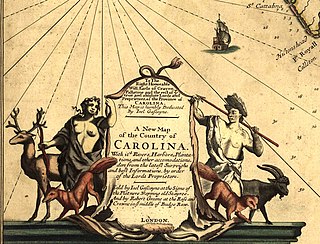 W
WJoel Gascoyne was an English nautical chartmaker, land cartographer and surveyor who set new standards of accuracy and pioneered large scale county maps. After achieving repute in the Thames school of chartmakers, he switched careers and became one of the leading surveyors of his day and a maker of land maps. He is best known for his maps of: the colonial Province of Carolina; of the county of Cornwall; and of the early 18th-century Parish of Stepney, precursor of today's East End of London. Gascoyne's distinctive style of chart and map-drawing was characterised by the use of bold and imaginative cartouches.
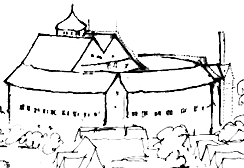 W
WThe Globe Theatre was a theatre in London associated with William Shakespeare. It was built in 1599 by Shakespeare's playing company, the Lord Chamberlain's Men, on land owned by Thomas Brend and inherited by his son, Nicholas Brend and grandson Sir Matthew Brend, and was destroyed by fire on 29 June 1613. A second Globe Theatre was built on the same site by June 1614 and closed by an Ordinance issued on 6 September 1642.
 W
WThe Great Fire of London was a major conflagration that swept through the central parts of London from Sunday, 2 September to Thursday, 6 September 1666. The fire gutted the medieval City of London inside the old Roman city wall. It threatened but did not reach the City of Westminster, Charles II's Palace of Whitehall, or most of the suburban slums. It destroyed 13,200 houses, 87 parish churches, St Paul's Cathedral, and most of the buildings of the City authorities. It is estimated to have destroyed the homes of 70,000 of the City's 80,000 inhabitants.
 W
WThe Great Plague of London, lasting from 1665 to 1666, was the last major epidemic of the bubonic plague to occur in England. It happened within the centuries-long Second Pandemic, a period of intermittent bubonic plague epidemics which originated from Central Asia in 1331, the first year of the Black Death, an outbreak which included other forms such as pneumonic plague, and lasted until 1750.
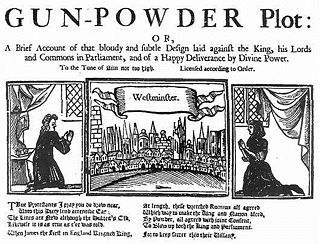 W
WThe Gunpowder Plot of 1605, in earlier centuries often called the Gunpowder Treason Plot or the Jesuit Treason, was a failed assassination attempt against King James I by a group of provincial English Catholics led by Robert Catesby.
 W
WThe High Court of Justice was the court established by the Rump Parliament to try Charles I, King of England, Scotland and Ireland. Even though this was an ad hoc tribunal that was specifically created for the purpose of trying the king, its name was eventually used by the government as a designation for subsequent courts.
 W
WHolland's Leaguer was the name of a Dutch English brothel in London between 1603 and January 1632. It has been referred to as the most famed brothel in 17th-century England. "Legeur" means military encampment.
 W
WThe Hope Theatre was one of the theatres built in and around London for the presentation of plays in English Renaissance theatre, comparable to the Globe, the Curtain, the Swan, and other famous theatres of the era.
 W
WJonathan's Coffee House was a significant meeting place in London in the 17th and 18th centuries, famous as the original site of the London Stock Exchange.
 W
WLloyd's Coffee House was a significant meeting place in London in the 17th and 18th centuries.
 W
WLoimologia, or, an historical Account of the Plague in London in 1665, With precautionary Directions against the like Contagion is a treatise by Dr. Nathaniel Hodges (1629–1688), originally published in London in Latin in 1672; an English translation was later published in London in 1720. The treatise provides a first-hand account of the Great Plague of London; it has been described as the best medical record of the epidemic. While most physicians fled the city, including the renowned Thomas Sydenham, and Sir Edward Alston, president of the Royal College of Physicians, Hodges was one of the few physicians who remained in the city during 1665, to record observations and test the effectiveness of treatments against the plague. The book also contains statistics on the victims in each parish.
 W
WThe London Company was an English joint-stock company established in 1606 by royal charter by King James I with the purpose of establishing colonial settlements in North America.
 W
WLondon's Love to Prince Henry, was a pageant on the River Thames organised by the city of London for the investiture of Prince Henry as Prince of Wales.
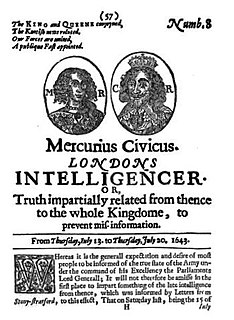 W
WMercurius Civicus: Londons Intelligencer, or, Truth impartially related from thence to the whole Kingdome to prevent mis-information was an English Civil War weekly newspaper, appearing on Thursdays from 4 May 1643 to 10 December 1646 published by John Wright and Thomas Bates. It supported the Roundhead (Parliamentary) cause.
 W
WThe Musaeum Tradescantianum was the first museum open to the public to be established in England. Located in South Lambeth, London, it comprised a collection of curiosities assembled by John Tradescant the elder and his son in a building called The Ark, and a botanical collection in the grounds of the building. Turret House, the family home, was demolished in 1881 and the estate has been redeveloped; the house stood on the site of the present Tradescant Road and Walberswick Street, off South Lambeth Road.
 W
WThe Whores' Petition was a satirical letter addressed from brothel owners and prostitutes affected by the Bawdy House Riots of 1668, to Lady Castlemaine, lover of King Charles II of England. It requested that she come to the aid of her "sisters" and pay for the rebuilding of their property and livelihoods. Addressed from madams such as Damaris Page and Elizabeth Cresswell, it sought to mock the perceived extravagance and licentiousness of Castlemaine and the royal court.
 W
WQueen Street is a street in the City of London which runs between Upper Thames Street at its southern end to Cheapside in the north. The thoroughfares of Queen Street and King Street were newly laid out, cutting across more ancient routes in the City, following the Great Fire of London in 1666; they were the only notable new streets following the fire's destruction of much of the City.
 W
WThe Restoration spectacular, also known as a machine play, was a type of theatre prevalent in the late 17th-century Restoration period. Spectaculars were elaborately staged, comprising such setups as action, music, dance, moveable scenery, baroque illusionistic painting, costumes, trapdoor tricks, "flying" actors, and fireworks. Although they were popular with contemporary audiences, spectaculars have endured a bad reputation as a vulgar contrast to the witty Restoration drama.
 W
WThe Rose was an Elizabethan theatre. It was the fourth of the public theatres to be built, after The Theatre (1576), the Curtain (1577), and the theatre at Newington Butts – and the first of several playhouses to be situated in Bankside, Southwark, in a liberty outside the jurisdiction of the City of London's civic authorities. Its remains were excavated by archaeologists in 1989.
 W
WThe Salisbury Court Theatre was a theatre in 17th-century London. It was in the neighbourhood of Salisbury Court, which was formerly the London residence of the Bishops of Salisbury. Salisbury Court was acquired by Richard Sackville in 1564 during the last seven years of his life when he was Chancellor of the Exchequer under Queen Elizabeth; when Thomas Sackville was created Earl of Dorset in 1604, the building was renamed Dorset House.
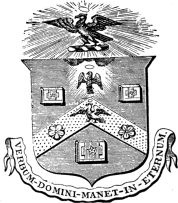 W
WThe Worshipful Company of Stationers and Newspaper Makers, usually known as the Stationers' Company, is one of the livery companies of the City of London. The Stationers' Company was formed in 1403; it received a royal charter in 1557. It held a monopoly over the publishing industry and was officially responsible for setting and enforcing regulations until the enactment of the Statute of Anne, also known as the Copyright Act of 1710. Once the company received its charter, “the company’s role was to regulate and discipline the industry, define proper conduct and maintain its own corporate privileges.”
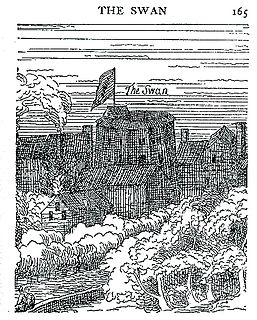 W
WThe Swan was a theatre in Southwark, London, England, built in 1595 on top of a previously standing structure, during the first half of William Shakespeare's career. It was the fifth in the series of large public playhouses of London, after James Burbage's The Theatre (1576) and Curtain (1577), the Newington Butts Theatre and Philip Henslowe's Rose (1587–88).
 W
WJacob Tonson, sometimes referred to as Jacob Tonson the Elder (1655–1736), was an eighteenth-century English bookseller and publisher.
 W
WThe Treaty of London, signed on 18 August O.S. 1604, concluded the nineteen-year Anglo-Spanish War. The treaty restored the 'Status quo' between the two nations. The negotiations probably took place at Somerset House in Westminster and are sometimes known as the Somerset House Conference.
 W
WThe Treaty of London (1700) or Second Partition Treaty was the second of two attempts by France, Great Britain and the United Provinces, or Dutch Republic, to impose a diplomatic solution to the issues that resulted in the 1701-1714 War of the Spanish Succession.
 W
WThe Whitefriars Theatre was a theatre in Jacobean London, in existence from 1608 to the 1620s — about which only limited and sometimes contradictory information survives.